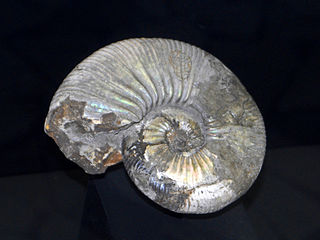 W
WAcanthohoplites is an extinct genus of ammonites in the family Parahoplitidae that lived in the Aptian and Early Albian stages of the Early Cretaceous.
 W
WAmphirhagatherium is an extinct genus of artiodactyl that lived in northern Europe during the middle to late Eocene.
 W
WAnkylosaurus is a genus of armored dinosaur. Its fossils have been found in geological formations dating to the very end of the Cretaceous Period, about 68–66 million years ago, in western North America, making it among the last of the non-avian dinosaurs. It was named by Barnum Brown in 1908; the only species in the genus is A. magniventris. The genus name means "fused lizard", and the specific name means "great belly". A handful of specimens have been excavated to date, but a complete skeleton has not been discovered. Though other members of Ankylosauria are represented by more extensive fossil material, Ankylosaurus is often considered the archetypal member of its group, despite having some unusual features.
 W
WBos palaesondaicus occurred on Pleistocene Java (Indonesia) and belongs to the Bovinae subfamily. It has been described by the Dutch paleoanthropologist Eugène Dubois in 1908. The holotype of Bos palaesondaicus is a skull from Trinil. This species is the likely ancestor to the banteng.
 W
WChapalmalania is an extinct genus of procyonid from the Pliocene of Argentina and Colombia.
 W
WFurca is an extinct genus of Marrellomorph arthropod known from the Sandbian stage of the Czech Republic. At least three distinct species have been described although they may all be synonyms of the type species, Furca bohemica. A tentative additional species, "Furca mauretanica": was proposed for specimens discovered in Morocco, but this species remains a nomen nudum until formally published.
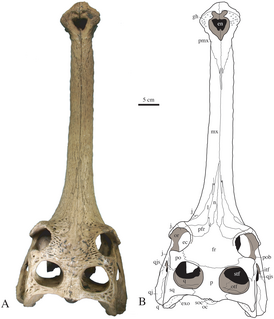 W
WGavialis bengawanicus is an extinct species of crocodilian that is related to the modern Indian gharial. Fossils have been found in Thailand and Indonesia. The type locality is at Trinil.
 W
WHastimima is a genus of prehistoric eurypterid of the family Mycteroptidae. It contains one valid species, Hastimima whitei, recovered from the Permian Hermit Shale of Arizona, and one dubious species, H. sewardi, from the Devonian of South Africa. Though clearly a mycteropoid eurypterid, the material referred to H. sewardi is so fragmentary that it is questionable if it possesses any diagnostic value at all.
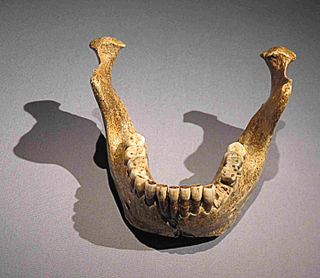 W
WHomo heidelbergensis is an extinct species or subspecies of archaic human which existed during the Middle Pleistocene. It was subsumed as a subspecies of H. erectus in 1950 as H. e. heidelbergensis, but further towards the end of the century, it was more widely classified as its own species. It is debated whether or not to constrain this species to only Europe or to also include African and Asian specimens, and this is further confounded by the type specimen being a jawbone, because jawbones feature few diagnostic traits and are generally missing among Middle Pleistocene specimens. Thus, it is debated if some of these specimens could be split off into their own species or a subspecies of H. erectus. Because the classification is so debated, the Middle Pleistocene is often called the "muddle in the middle."
 W
WKannemeyeria is a genus of kannemeyeriid dicynodont that lived during the Anisian age of Middle Triassic period in what is now Africa and possibly Europe and Asia as well. The generic name is given in honor of Dr. Daniel Rossouw Kannemeyer, the South African fossil collector who discovered the original specimen. It is one of the first representatives of the family, and hence one of the first large herbivores of the Triassic.
 W
WPanthera tigris trinilensis, known as the "Trinil tiger", is an extinct tiger subspecies dating from about 1.2 million years ago that was found at the locality of Trinil, Java, Indonesia. The fossil remains are now stored in the Dubois Collection of the National Museum of Natural History in Leiden, the Netherlands. Although these fossils have been found on Java, the Trinil tiger is probably not a direct ancestor of the Javan tiger. The Trinil tiger probably became extinct 50,000 years ago. The Bali tiger was also not closely related to the Trinil because of their time differences.
 W
WPtolemaia is a genus of extinct Afrotherian mammals from the Oligocene of East Africa. The genus and type species, P. lyonsi, was described by Henry Fairfield Osborn in 1908 from the Jebel Qatrani Formation of Egypts' Fayum Depression. The genus name alludes to the Ptolemaic dynasty of Ancient Greece which ruled over the Egyptian region where Ptolemaia was discovered, while the specific epithet lyonsi honors H. G. Lyons, then director of the Egyptian Geological Survey. A second species, P. grangeri, was described in 1987, and named after the early 20th century paleontologist Walter W. Granger. Fossils of P. grangeri are also known from Kenya.
 W
WSphaerocodium is a fossil that represents the remains of bacteria in the phylum Cyanobacteria, often called blue-green algae.
 W
WStrigogyps is an extinct genus of prehistoric bird from the Middle Eocene to Early Oligocene of France and Germany. It was probably around the size of a large chicken or a guan, weighing not quite 1 kilogram (2.2 lb). Apparently, as indicated by the ratio of lengths of wing to leg bones, S. sapea was flightless. Its legs were not adapted to running, so it seems to have had a walking lifestyle similar to trumpeters. Unlike other Cariamiformes, which appear to have been mostly carnivorous, Strigogyps specimens suggest a herbivorous diet.
 W
WTetraceratops insignis is an extinct synapsid from the Early Permian of Texas. It was originally classified as an early and very primitive member of Therapsida, a group that includes mammals and their close extinct relatives. However, it is now seen as a primitive non-therapsid sphenacodont rather than a genuine basal therapsid.
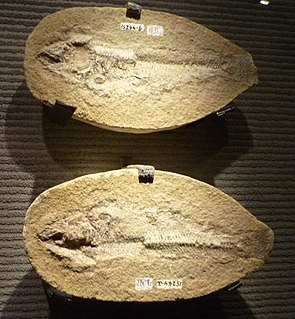 W
WTharrhias is an extinct genus of prehistoric bony fish that lived during the Aptian stage of the Early Cretaceous epoch. The type species T. araripis is named after the Araripe Basin, in which it was found in sediments of the Santana Formation.
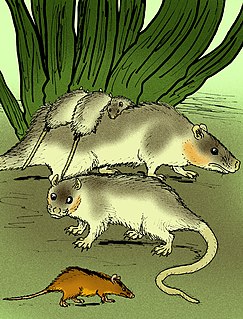 W
WThylophorops is an extinct genus of didelphine opossums from the Pliocene of South America. Compared to their close didelphine cousins like the living Philander and Didelphis opossums, Thylophorops displays specialization towards carnivory, and one species, T. lorenzinii, is the largest known opossum of all time, which could imply a macropredatory role.
 W
WZygorhiza ("Yoke-Root") is an extinct genus of basilosaurid early whale known from the Late Eocene of Louisiana, Alabama, and Mississippi, United States, and the Bartonian to the late Eocene of New Zealand . Specimens reported from Europe are considered Dorudontinae incertae sedis.